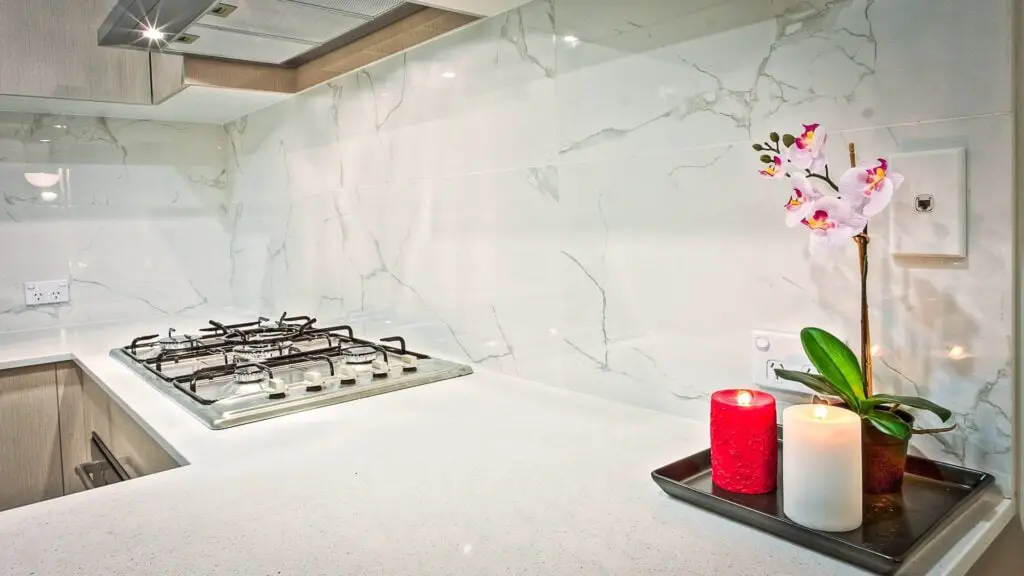
How to Reseal an Undermount Sink
The water that accumulates around kitchen sinks is one of their main issues. Water causes soap scum and mold to grow on the top and bottom rims of sinks.
Cleaning the rim of your kitchen sink is not an impossible challenge. But cleaning constantly gets tiresome quickly, especially in a kitchen where there is so much stuff to tidy.
The majority of kitchen sinks are separate from the countertop, with the exception of a small number of integrated sinks, which combine the countertop and sink into a single molded piece. They can be classified as either drop-in sinks or undermount sinks. Undermount sinks have the obvious benefit of assisting you in avoiding the issue of water buildup.

Drop-In Sinks vs. Undermount Sinks
Both drop-in and undermount sinks have benefits and drawbacks. Since they merely drop, or sit, into the countertop cutout and are supported by a rim sitting on the countertop itself, drop-in sinks are simple to install. However, because the rim is elevated above the adjacent countertop, water can leak out and land there.
Since they hang down below the top of the tabletop, undermount sinks do not cause water to flow onto the surface. Since its higher weight is hung from the base of the countertop with clips and adhesives, undermount sinks are far more difficult to install.
As a result, an undermount kitchen sink’s recessed edge—the seam where the top lip of the sink meets the underside of the countertop—is especially prone to leaks. You might find that water seeps around this seam, dripping into the floor within the sink base cabinet, if the sink hasn’t been put exactly.
Self-rimming sinks, also known as drop-in sinks, hang from the sink’s rim and drop in from the top. Undermount sinks, on the other hand, are those that are mounted beneath the countertop’s cutout opening, effectively hanging from the base of the countertop.
Re-Sealing an Undermount Sink
It’s usual for leaks to appear a few days or weeks after the installation of an undermount sink, whether you installed it yourself or hired a professional to do it. When this occurs, one, three, or more factors are probably at play.
Poorly Prepared Countertop Bottom
It’s possible that the countertop’s base, which touches the sink, wasn’t fully cleaned. Before caulking, all surfaces need to be cleaned with denatured alcohol. Caulking can frequently be compromised by dust on granite or solid surfaces like Corian or Silestone, so these surfaces should be cleaned before installation.
Insecure Clamps
In other instances, the installation was done properly, but the bottom needed to be completely cleaned. The caulk immediately pulled away because the clamps, epoxy, or both that were used to hold the sink to the base of the countertop were too flimsy.
Wrong Sealant Was Used
It’s possible that the sink installer neglected to use a genuine kitchen sealant. For undermount sink installation, the majority of undermount sink manufacturers advise using 100% pure silicone sealant. Silicone sealants have good adhesion qualities and are made to be flexible but resilient. If regular caulk were used to seal the sink, it would probably fail very shortly.
How to Fix Undermount Sink Leaks
Leaks on an undermount sink can likely be fixed by yourself, despite the laborious process.
- Crawl underneath the sink to begin by ensuring that the clamps are firmly holding the sink to the base of the countertop.
- Apply fresh 100 percent silicone sealant from inside the cabinet to the seam near the sink.
- You can try to recaulk and see if it has stopped any leaks if you make sure the sink is firmly fastened.
The sink should be completely removed and then resealed to the countertop as the best solution.
- Cut the water off.
- Drain and supply pipes for the plumbing must all be removed.
- Take the undermount sink out of the countertop’s clamps.
- Pulling the sink away from the countertop should be doable with relative ease if the silicone caulk is old enough and has been failing.
- Scrape off as much caulk from the top flange of the sink as you can after removing it.
- Denatured alcohol can be used to properly clean the surfaces.
- Apply a thin bead of the suggested silicone sealant to the top flange of the sink after thoroughly cleaning and drying the connection.
- Reinstall the sink as soon as possible to avoid the silicone sealant curing.
- Set a clamp in position.
- Remove any sealant that may have leaked through either side of the sink using a clean rag.
To know other construction guides, tips, and methodology for beginners, veterans, and contractors, please see here.
To know the flood prone areas in the Philippines, Top 10 Flood-Prone Areas to Live in the Philippines.
To know more about Concrete Hollow Blocks, Simple Reasons Why Hollow Blocks are Highly Used in the Philippines
To know more about Hammers and Nails, Tips for Guaranteed Best Technique for Hammering Nails
To know more about Tees and Wyes, What is the Guaranteed Best to Use: Sanitary Tee Vs Wye